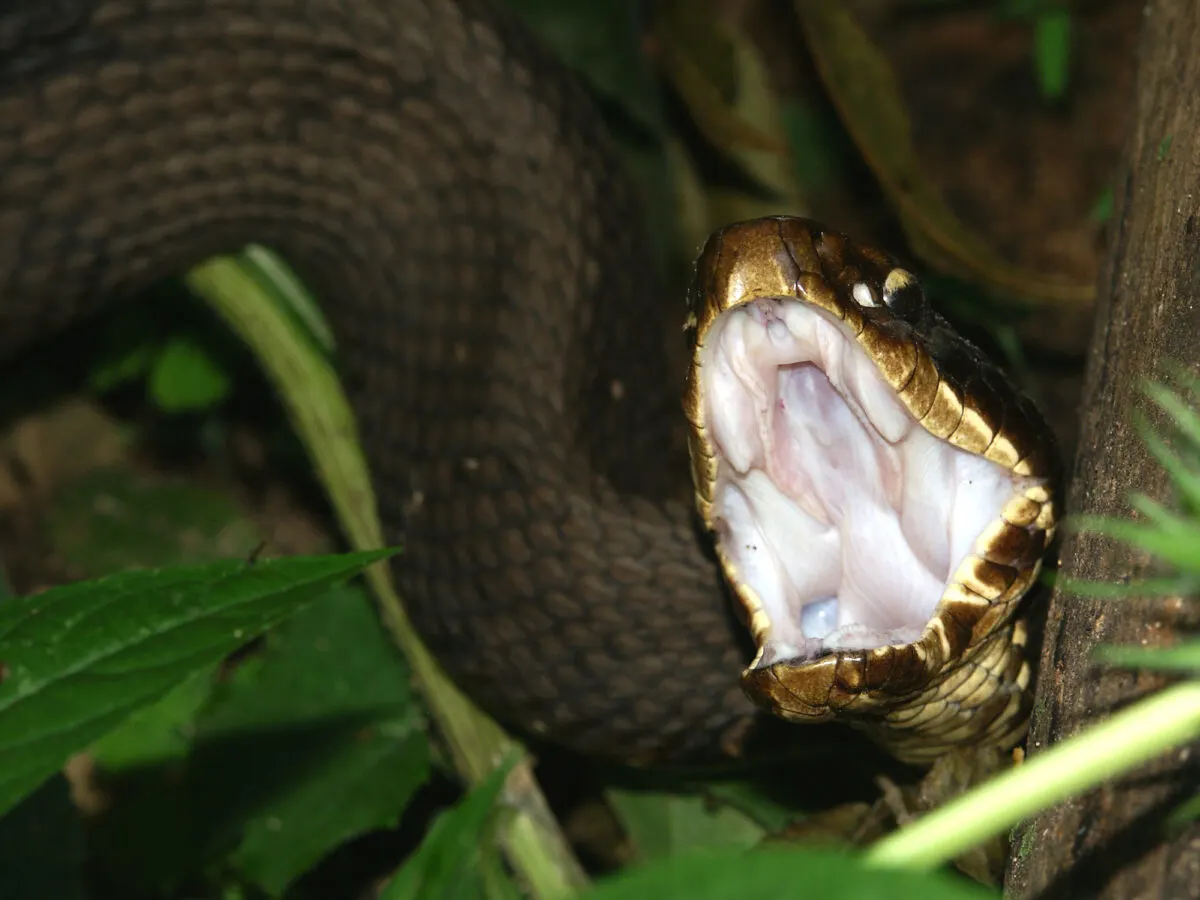In this post we’re going to examine all the symptoms and treatments that follow after a potent cottonmouth bite.
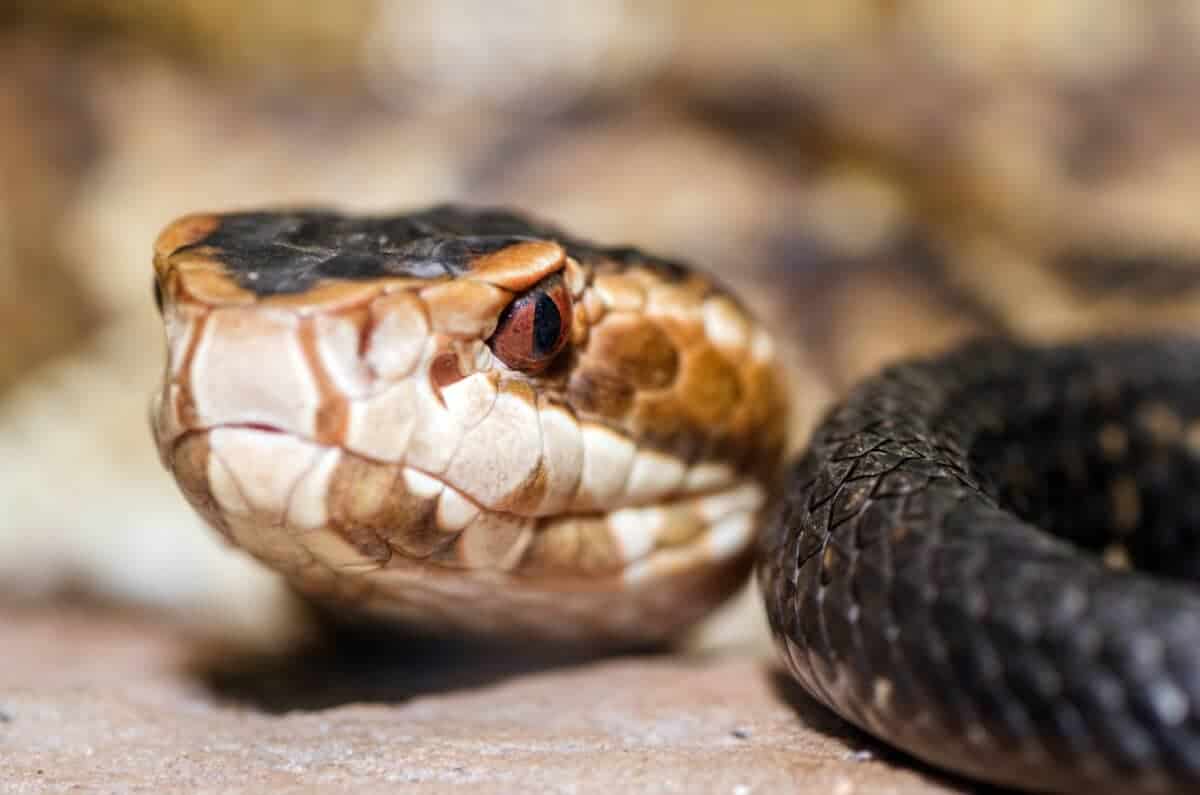
Water moccasins or cottonmouth snakes are venomous reptiles commonly found in the southeastern region of the United States (the texas rat snake is also common in this region.) Their bites can cause various symptoms, from mild discomfort to life-threatening complications.
Cottonmouth snakes are pit vipers. You can identify them by their triangular head, elliptical pupils, and heat-sensing pits between their eyes and nostrils. These snakes usually reside near water sources such as swamps, rivers, and lakes and tend to exhibit aggressive behavior when they feel threatened.
Let’s prepare you so that you know what to do should you ever encounter a cottonmouth up close!
Key Points
- Cottonmouth snake bite symptoms include pain, swelling, bruising, nausea, vomiting, difficulty breathing and a rapid heartbeat.
- The most important thing following a cottonmouth snake bite is to stay calm and seek immediate medical attention.
- The recovery process after a cottonmouth snake bite usually involves hospitalization and then rehabilitation to regain mobility and strength.
- Long-term effects of a cottonmouth snake bite can include chronic pain and disability, scarring and disfigurement.
- Many victims also suffer from psychological effects, such as post-traumatic stress disorder (PTSD).
Symptoms of a Cottonmouth Snake Bite
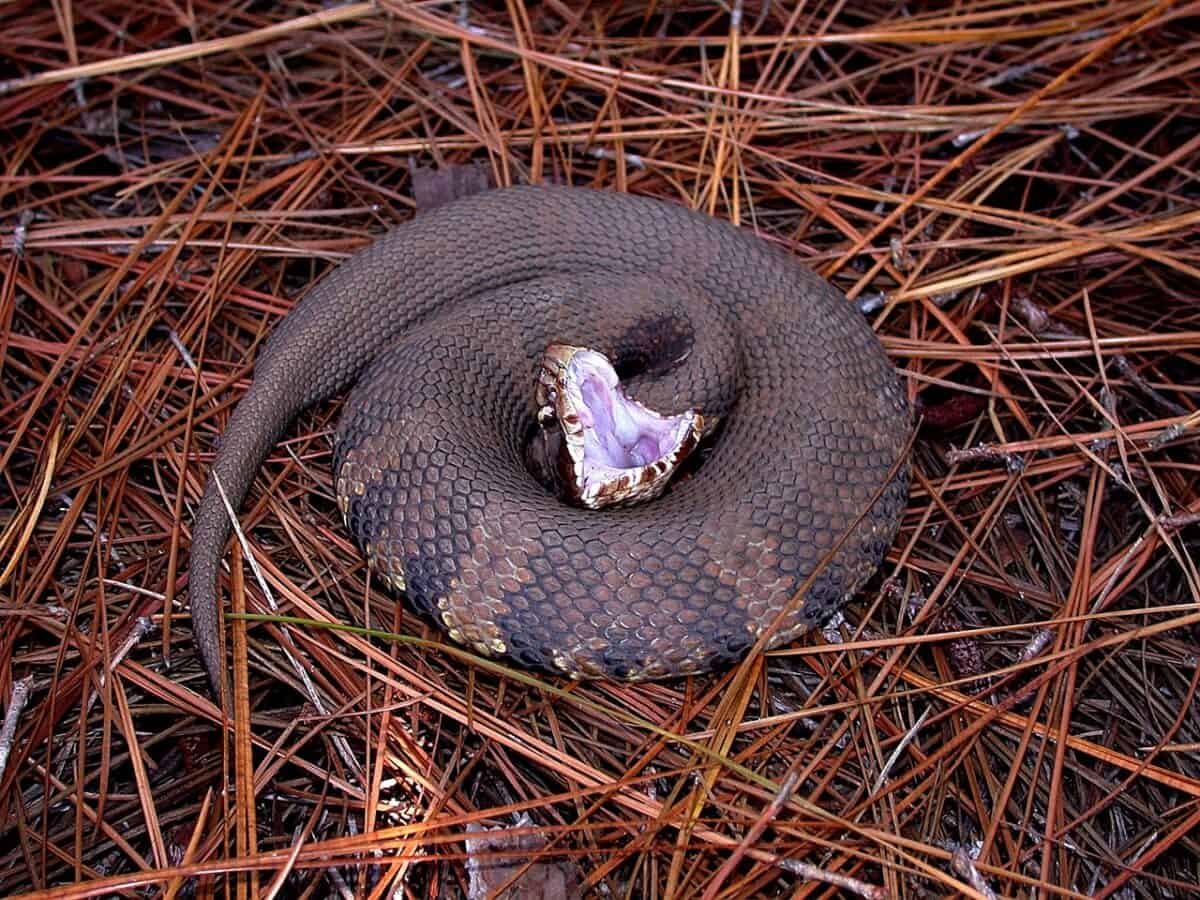
Cottonmouth snake bite symptoms fall into two categories – localized and systemic symptoms. (Another snake that packs a potent bite is the black mamba.)
Localized Symptoms
#1 Pain and Swelling
The pain and swelling at the bite site can be intense and may start within minutes of the bite. The affected area may also become discolored and swollen, with the skin wearing a bluish or purplish hue.
This is due to the venom’s ability to break down the walls of blood vessels, causing them to leak into surrounding tissues.
#2 Bruising and Discoloration of the Skin
Sometimes, the bite site may also develop blisters and necrotic tissue. The degree of swelling and discoloration resulting from a cottonmouth snake bite can vary depending on factors such as the amount of venom injected, the location of the bite, and the individual’s reaction to the poison.
It is important to note that not all bites from a cottonmouth snake will result in the same symptoms.
Systemic Symptoms
#1 Nausea and Vomiting
In addition to localized symptoms, cottonmouth snake venom can cause nausea and vomiting, posing a severe risk if the victim inhales their vomit.
#2 Difficulty Breathing
In some cases, the venom can cause respiratory distress, leading to breathing difficulties or even respiratory failure.
#3 Rapid Heartbeat
The venom can cause an increase in heart rate, which can be especially dangerous for those with pre-existing heart conditions.
Treatment for a Cottonmouth Snake Bite
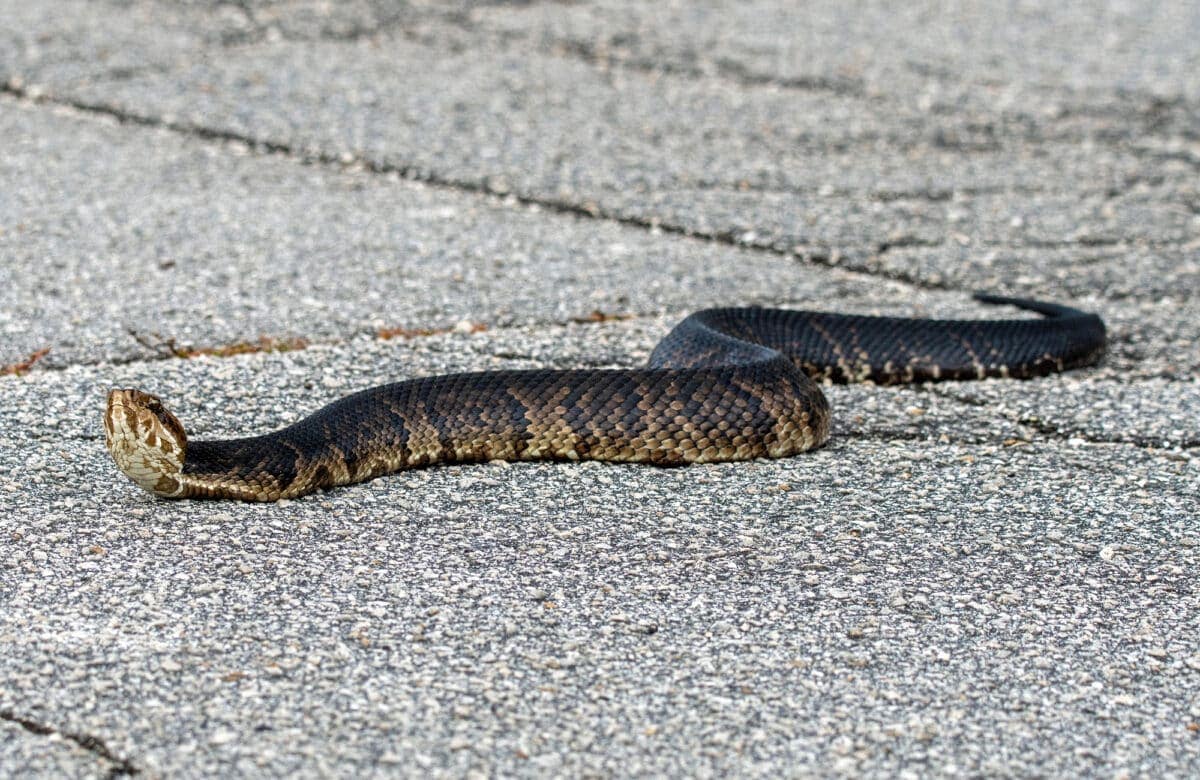
#1 First Aid
Stay Calm and Seek Immediate Medical Attention
If a cottonmouth snake bites you, it is crucial to remain calm and seek immediate medical attention to avoid complications or potentially life-threatening situations. Do not try to capture or kill the snake, this will put you at the risk of falling victim to another bite.
Clean and Cover the Bite Wound
After seeking medical attention, cleaning the bite wound with soap and water and covering it with a sterile bandage can help prevent infection and promote healing.
Keep the Affected Limb Immobilized
Keeping the affected limb at or below heart level can help prevent the venom from spreading and is essential after a cottonmouth snake bite.
#2 Medical Treatment
Administration of Antivenom
Antivenom is a type of medication that can neutralize the effects of the venom. Receiving antivenom as soon as possible after being bitten by a cottonmouth snake is crucial and can significantly increase the chances of a successful recovery.
Pain Management
Administration of pain medications may help manage pain and discomfort.
Wound Care
The bite wound may require debridement or surgical intervention, depending on the severity of the bite.
The Recovery Process of a Cottonmouth Bite
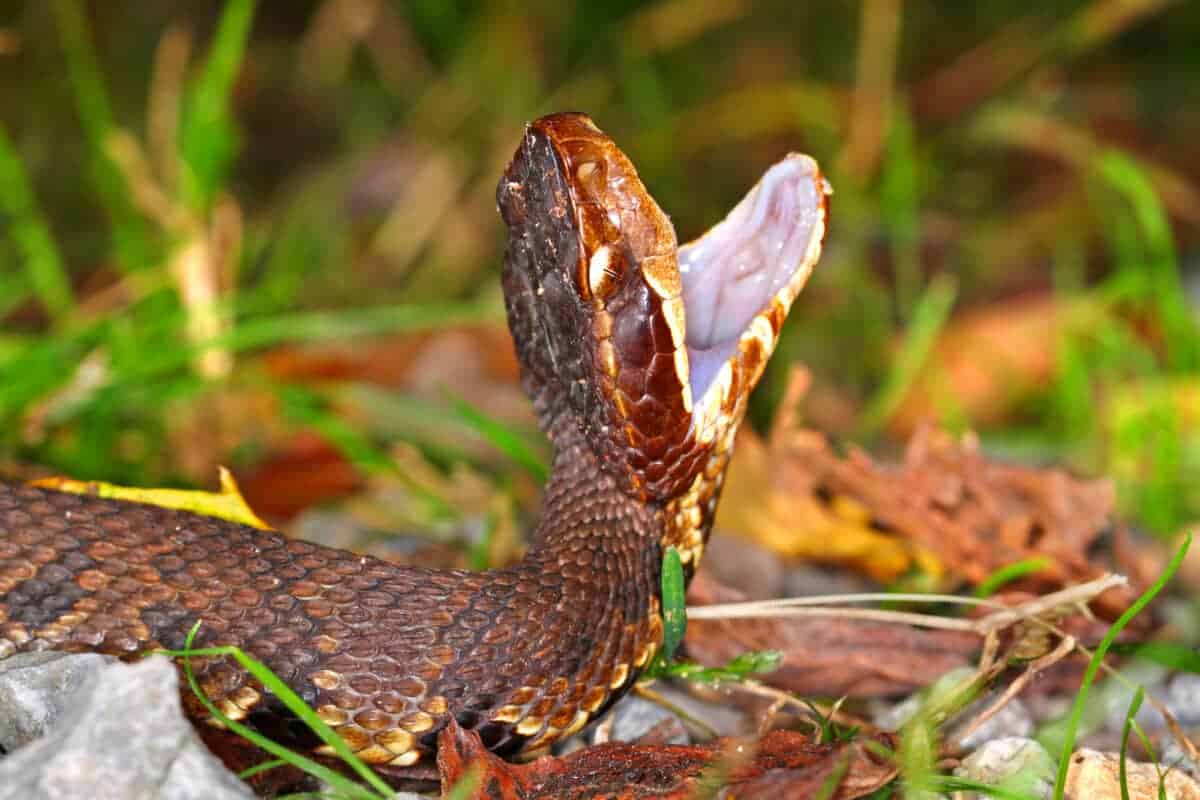
Observation and Monitoring
Individuals bitten by a cottonmouth snake will typically be admitted to the hospital for observation and monitoring to ensure that their condition remains stable and that any necessary treatments are administered promptly.
During this time, medical professionals will monitor the victim’s vital signs and symptoms and provide any necessary medical treatment, such as antivenom administration or pain management.
The duration of hospitalization after a cottonmouth snake bite is not fixed. It varies based on several factors:
- the severity of the bite
- the individual’s response to treatment
- other relevant factors
Some patients may need a more extended stay than others due to the quantity of venom injected, the location of the bite, and the efficacy of the antivenom and other interventions administered.
Rehabilitation
Following a cottonmouth snake bite, physical therapy and rehabilitation may be required to assist the victim in recovering their mobility and strength. Depending on the severity of the bite, the individual may experience limited mobility, weakness, or muscle atrophy.
Physical therapy for a cottonmouth snake bite may involve a range of exercises to improve the victim’s range of motion and strength and balance training. Rehabilitation can take several weeks or even months, depending on the individual’s progress and the extent of their injuries.
Individuals must work closely with their healthcare providers to develop a comprehensive rehabilitation plan and follow through with all recommended treatments and exercises.
Psychological Support
Experiencing a cottonmouth snake bite can be a traumatic event that may lead to anxiety and fear. Seeking psychological support when necessary is crucial in helping victims deal with the emotional aftermath of the experience.
To manage anxiety and fear after experiencing a cottonmouth snake bite, it can be helpful to consult a mental health professional or counselor who can provide coping strategies and emotional support.
Contact local mental health resources for support and guidance.
Follow-up Care
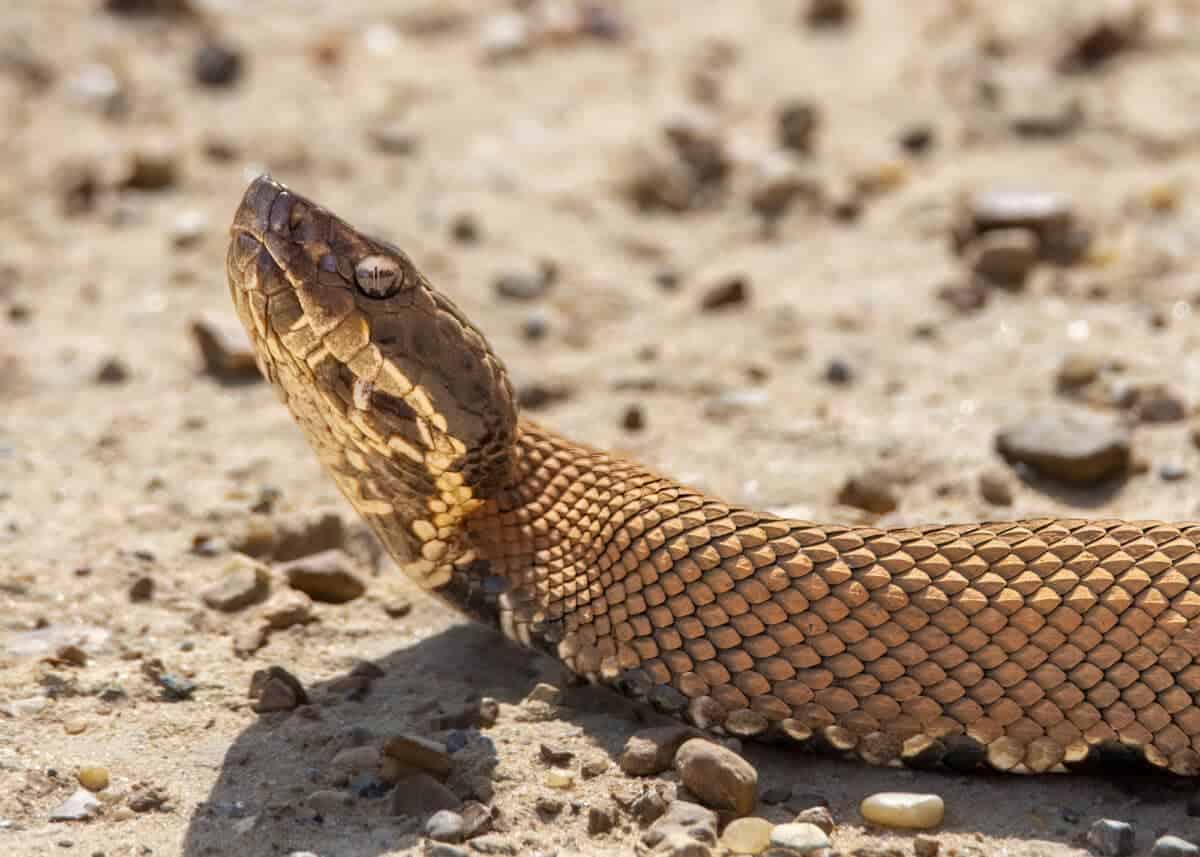
Medication Management
Those bitten by a cottonmouth snake may require ongoing medication management to help manage pain and prevent infection.
Wound Care
The bite wound may require ongoing maintenance, including regular dressing changes and cleaning.
Physical Therapy
Physical therapy can play a crucial role in aiding the victim’s recovery by helping them regain strength and mobility following a cottonmouth snake bite.
Prevention of Future Bites
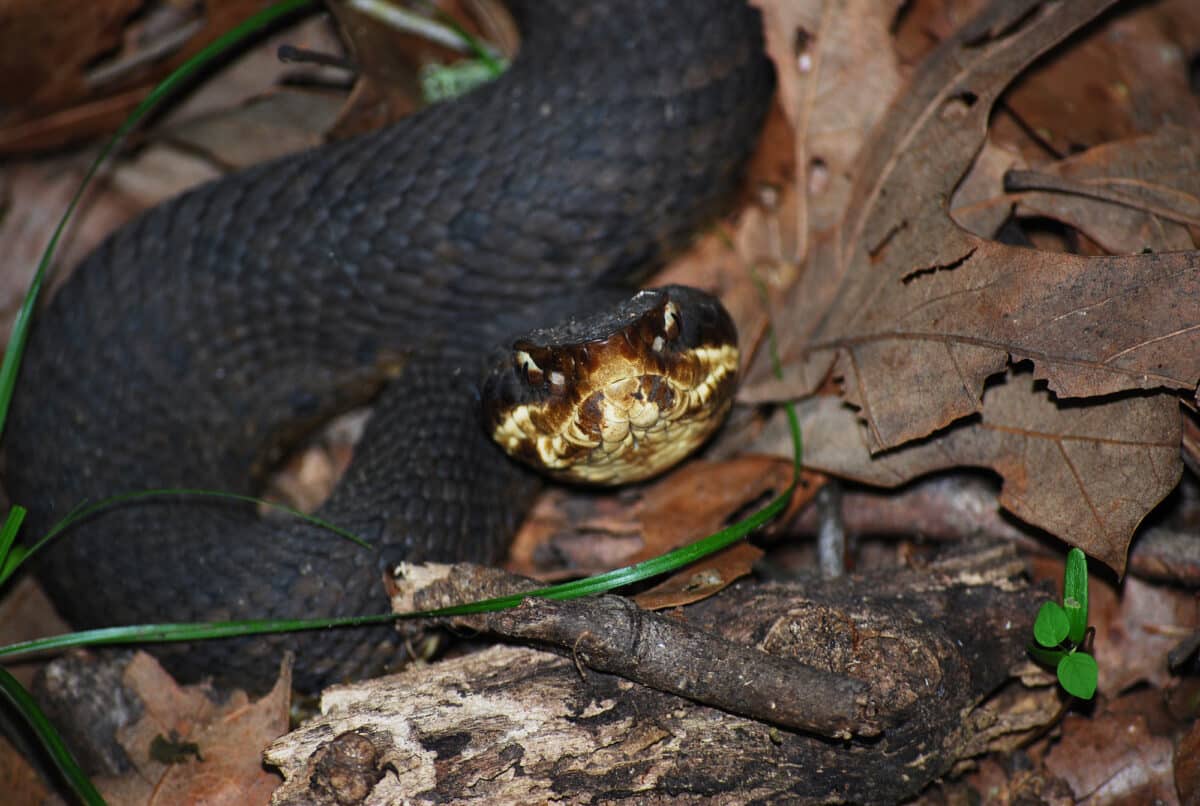
To prevent future cottonmouth snake bites, the following steps should be taken:
- Avoid High-risk Areas: Avoid areas where cottonmouth snakes are known to live, such as wetlands, swamps, and streams.
- Protective Clothing: Wear long pants, boots, and gloves when working or playing in areas where cottonmouth snakes are present.
- Awareness of Surroundings: Be aware of your surroundings and watch for snakes. Avoid stepping in areas with little visibility and places where snakes could hide.
Long-Term Effects of a Cottonmouth Bite

Chronic Pain and Disability
In some cases, the victim of a cottonmouth snake bite may experience ongoing pain and disability. This can be due to nerve damage, tissue damage, or other complications arising from the bite.
Chronic pain may require ongoing medical management and could impact the individual’s ability to perform daily activities.
Scarring and Disfigurement
The bite wound from a cottonmouth snake can be severe and may leave scars or cause disfigurement. This can be a result of tissue damage, infection, or surgery.
The appearance of scars and disfigurement can cause emotional distress and may require cosmetic surgery to repair the damage.
Sometimes, the victim may feel self-conscious or embarrassed about the scarring and may require psychological support to cope with these feelings.
Psychological Effects
Psychological effects can also be long-lasting. PTSD is a typical response to traumatic events like a snake bite, and patients may experience ongoing fear and anxiety around snakes or in other high-stress situations.
Wrapping Up
Cottonmouth snake bites are a medical emergency that requires prompt attention. If you suspect a cottonmouth snake has bitten you, remaining calm and seeking immediate medical assistance is essential. With prompt treatment and proper follow-up care, most patients can fully recover.
Preventing future snake bites is vital to long-term health and well-being. Avoiding high-risk areas and wearing protective clothing can reduce your risk of a snake bite. And if you do experience psychological distress after a snake bite, know that help is available.
Education and awareness are vital to preventing cottonmouth snake bites and other wildlife-related injuries. By understanding the risks and taking appropriate precautions, you can enjoy the great outdoors safely and confidently.
Thank you for reading this article! To dive deeper into the world of snakes, read about the largest anaconda man has ever com across here. For an overview of all our snake-related content, click here.
- Octopus Stuck to Diver’s Back and Won’t Come Off - April 25, 2024
- Magpie Bird Is Reunited with Her Dog Best Friend - April 24, 2024
- Dog Saves Another Dog From Drowning in Fish Pond - April 23, 2024

